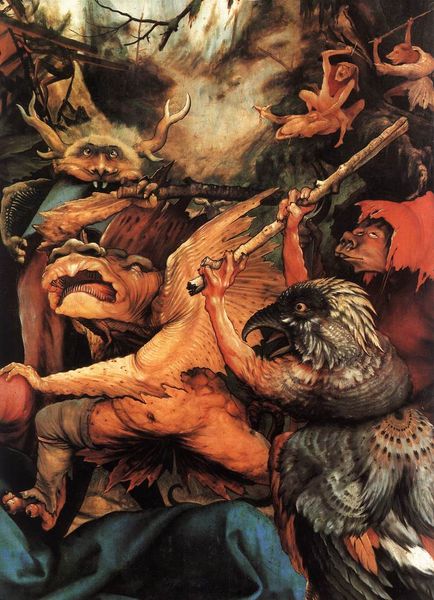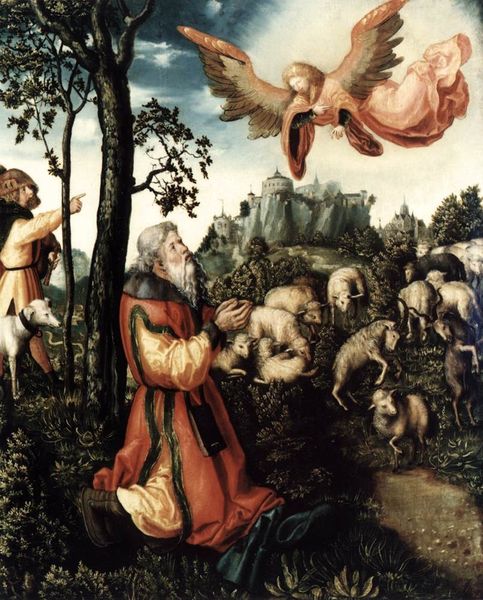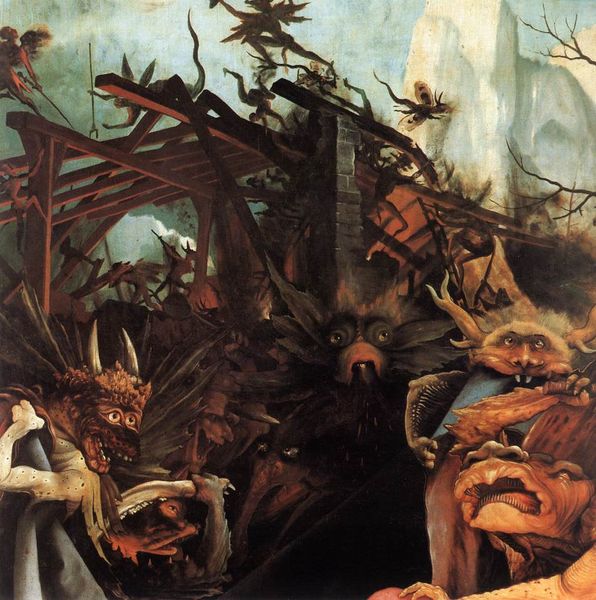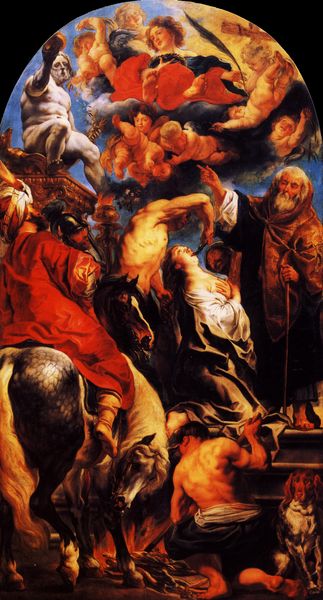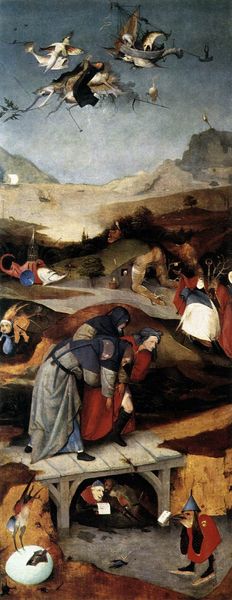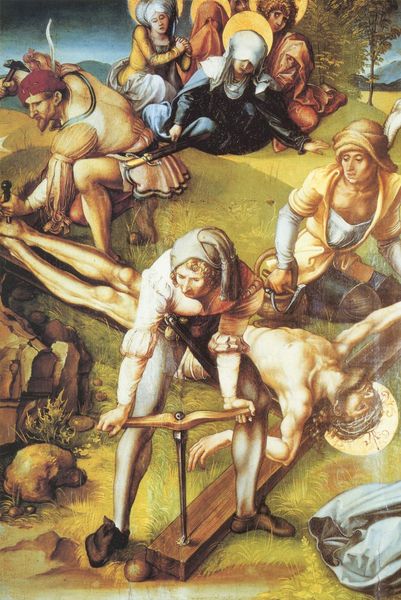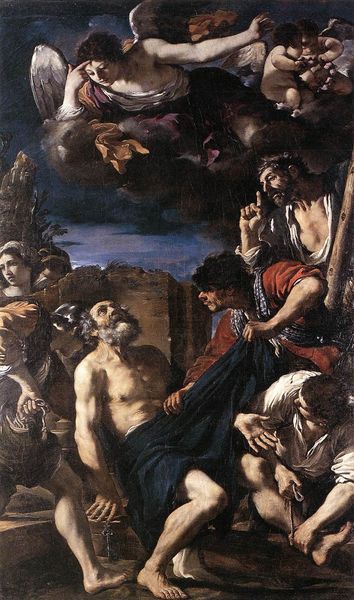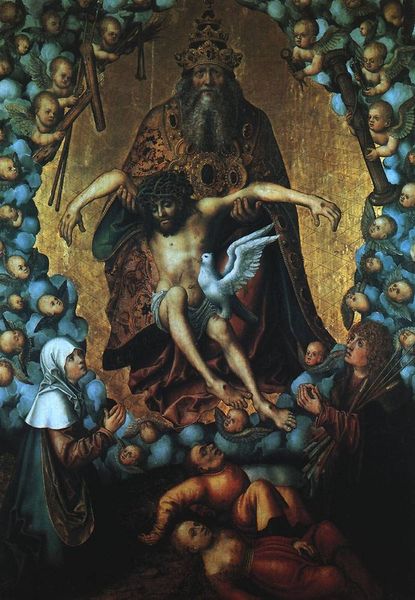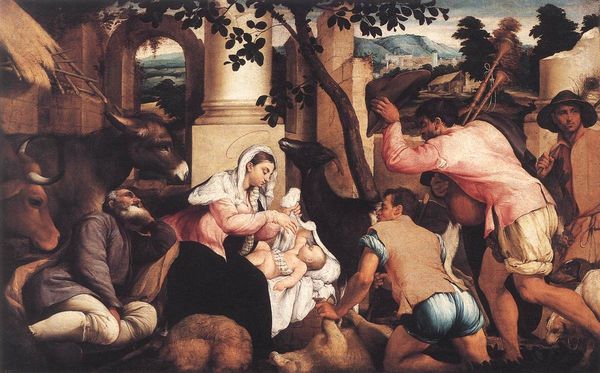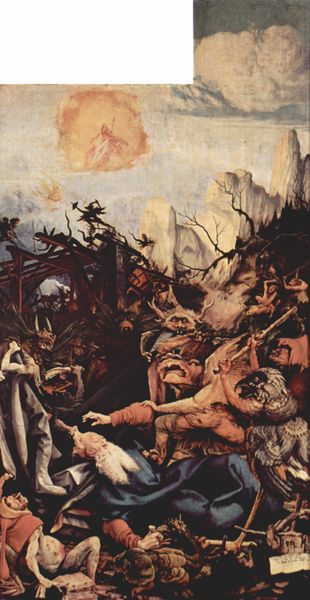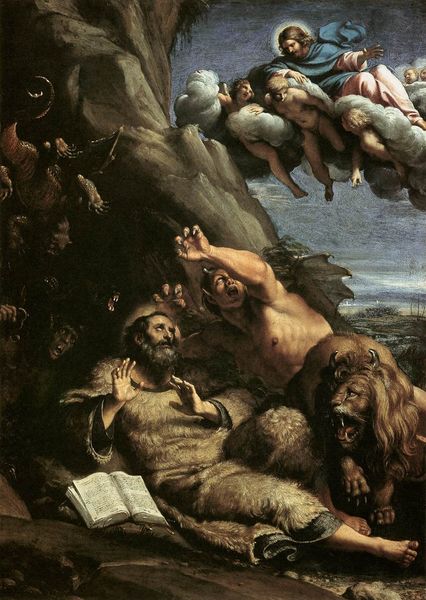
Copyright: Public domain
Matthias Grünewald’s "The Temptation of St. Anthony" assaults us with its dark palette, dominated by blacks and murky browns. This heightens the emotional and psychological intensity of the scene. The painting’s chaotic composition centers on a cluster of monstrous figures surrounding the saint. This creates a sense of claustrophobia and overwhelming horror. Grünewald masterfully employs texture to distinguish between the saint's suffering flesh and the grotesque forms of his tormentors. The rough, almost visceral brushstrokes heighten the sense of realism and convey the physical agony of St. Anthony. The monsters, rendered with meticulous detail, evoke a sense of disgust. This work challenges traditional notions of beauty. Instead, it embraces the grotesque as a means of exploring themes of faith, suffering, and the human condition. Grünewald uses the interplay between light and shadow, texture, and form to create a powerfully unsettling experience, inviting viewers to confront the darker aspects of human existence. Through this disturbing imagery, the painting destabilizes the established norms of religious art, prompting profound questions about the nature of good and evil.
Comments
No comments
Be the first to comment and join the conversation on the ultimate creative platform.
